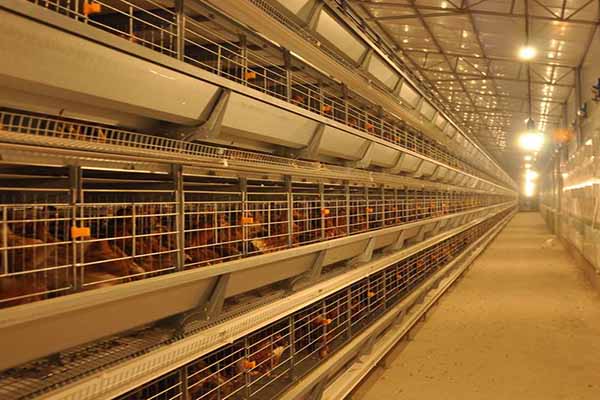Installation Process of Automated Equipment for Chicken Farms in Uganda
Time : 2025-06-25
The installation of automated equipment in chicken farms in Uganda is a crucial step towards modernizing the poultry industry. This process involves careful planning, execution, and maintenance to ensure that the equipment operates efficiently and effectively. This article will delve into the detailed installation process, highlighting the key considerations and best practices for integrating automated systems into chicken farms in Uganda.
Planning the Installation
1. Needs Assessment
Before installing any automated equipment, it is essential to conduct a thorough needs assessment. This involves evaluating the farm’s current operations, identifying areas that can be improved with automation, and setting clear objectives for the installation.
– Inventory of Current Systems: Understand the existing infrastructure and technology in use.
– Objective Setting: Define what the automated system is intended to achieve, such as increased productivity, better biosecurity, or reduced labor costs.
2. Equipment Selection
Selecting the right equipment is critical. Consider factors such as the farm’s size, the type of poultry raised, and the specific tasks that need to be automated.
– Feeding Systems: Automatic feeders that adjust feeding rates based on the birds’ age and weight.
– Watering Systems: Automated systems that ensure continuous access to clean water.
– Climate Control: Systems that regulate temperature and humidity for optimal poultry health.
– Manure Management: Automated systems for handling and disposing of manure.
Pre-Installation Preparation
1. Site Evaluation
Before installation, evaluate the site for suitability. Consider factors such as electrical supply, water availability, and space requirements.
– Electrical Supply: Ensure that the power supply can support the automated equipment.
– Water Supply: Verify that a reliable water source is available for the systems that require it.
– Space Requirements: Plan for the physical space needed for the equipment.
2. Infrastructure Upgrades
If necessary, upgrade the farm’s infrastructure to accommodate the new equipment. This may include installing new electrical lines, water pipes, or modifying existing structures.
Installation Process
1. Equipment Delivery and Unpacking
Upon arrival, inspect the equipment for any damage during transportation. Unpack and organize all components for installation.
– Damage Inspection: Check for any visible damage to the equipment.
– Component Organization: Keep all parts and tools in a designated area for easy access.
2. Equipment Assembly
Follow the manufacturer’s instructions to assemble the equipment. Ensure that all parts are correctly fitted and that connections are secure.
– Manufacturer’s Instructions: Adhere to the guidelines provided by the equipment manufacturer.
– Secure Connections: Make sure that all electrical and water connections are tight and leak-proof.
3. Equipment Integration
Integrate the automated equipment with the farm’s existing systems. This may involve programming the equipment to work with sensors, cameras, or other monitoring devices.
– System Integration: Connect the equipment to the farm’s monitoring system for real-time data collection.
– Programming: Set up the equipment to operate as required, such as automated feeding schedules.
Post-Installation Checks
1. Functional Testing
After installation, conduct thorough functional testing to ensure that all equipment operates correctly.
– Testing Procedures: Follow a checklist to verify the functionality of each component.
– Problem Identification: Address any issues that arise during testing promptly.
2. Training Staff
Train the farm’s staff on how to operate and maintain the new equipment. This includes understanding the controls, troubleshooting common problems, and performing routine maintenance.
– Staff Training: Organize training sessions to familiarize staff with the new systems.
– Maintenance Protocols: Establish maintenance schedules and protocols to keep the equipment in good working order.
Maintenance and Upkeep
Regular maintenance is crucial for the longevity and efficiency of automated equipment. Implement a comprehensive maintenance program that includes:
– Routine Inspections: Regularly check equipment for signs of wear and tear.
– Cleaning and Sanitizing: Clean and sanitize equipment to prevent the spread of disease.
– Component Replacement: Replace worn-out parts before they fail.
Conclusion
The installation of automated equipment in chicken farms in Uganda is a complex but essential process. By following a structured approach that includes thorough planning, careful installation, and ongoing maintenance, farms can benefit from increased efficiency, improved biosecurity, and reduced labor costs. With the right equipment and proper integration, chicken farms in Uganda can take a significant step towards modernization and sustainability.












